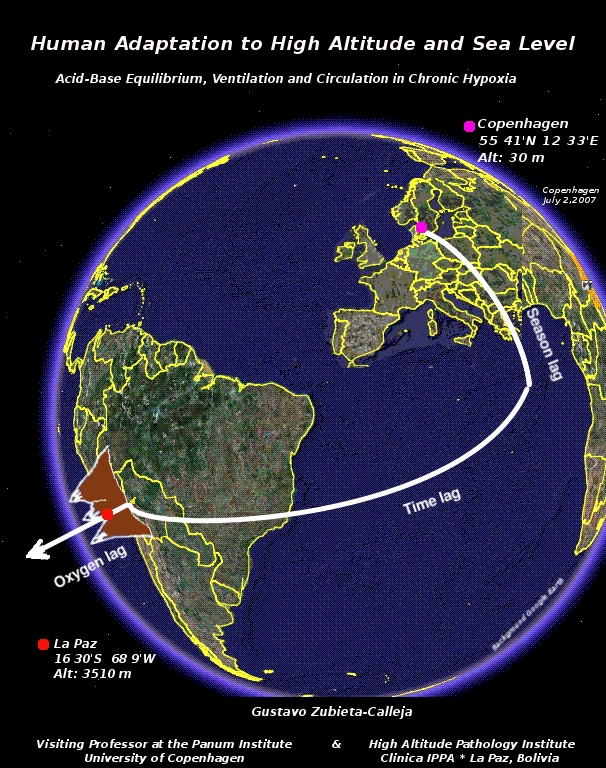
Dear colleagues and friends:
The organizing committee thanks all of those that expressed their interest in participating. We look forward to everyones participation with their interesting scientific work. You are all welcome.
We would like to inform you that some of our most recent publications are among the themes to be addressed at our forthcoming symposium:
High altitude diving depths.
Res Sports Med. 2007 Jul-Sep;
15(
3):
213-23.
PMID: 17987509
http://dx.doi.org/10.1080/15438620701526795
Our pre-print copy can be read
here
Thorsen HC, Zubieta-Calleja G, Paulev PE.
Decompression sickness following seawater hunting using underwater scooters.
Res Sports Med. 2007 Jul-Sep;
15(
3):
225-39.
PMID: 17987510
Paulev PE, Siggaard-Andersen O.
Clinical application of the pO(2)-pCO(2) diagram.
Acta Anaesthesiol Scand. 2004 Oct;
48(
9):
1105-14.
PMID: 15352956 [PubMed – indexed for MEDLINE]
Paulev PE, Zubieta-Calleja GR.
Essentials in the diagnosis of acid-base disorders and their high altitude application.
J Physiol Pharmacol. 2005 Sep;
56 Suppl 4:
155-70.
PMID: 16204789
Full pdf article. Read it
here
Zubieta-Calleja GR, Paulev PE, Zubieta-Calleja L, Zubieta-Calleja N, Zubieta-Castillo G.
Hypoventilation in chronic mountain sickness: a mechanism to preserve energy.
J Physiol Pharmacol. 2006 Sep;
57 Suppl 4:
425-30.
PMID: 17072073
Full pdf article. Read it
here
Zubieta-Castillo G Sr, Zubieta-Calleja GR Jr, Zubieta-Calleja L.
Chronic mountain sickness: the reaction of physical disorders to chronic hypoxia.
J Physiol Pharmacol. 2006 Sep;
57 Suppl 4:
431-42.
Hope you enjoy them,
MERRY CHRISTMAS and a HAPPY NEW YEAR !!

Poul-Erik Paulev, Gustavo Zubieta-Calleja and Gustavo Zubieta-Castillo (Sr).







